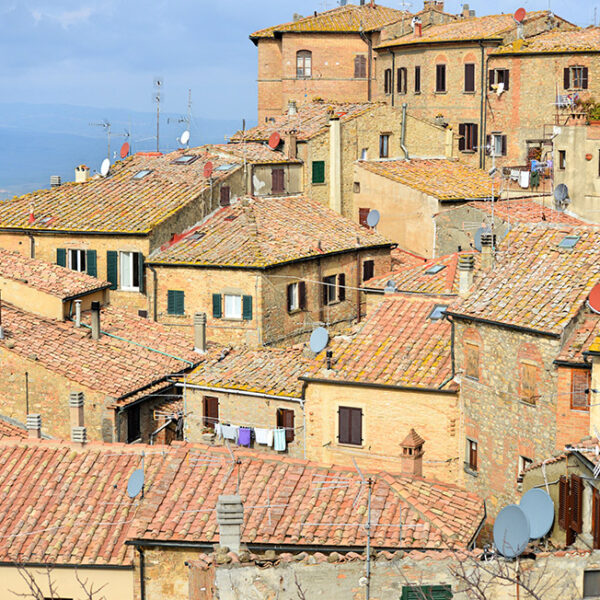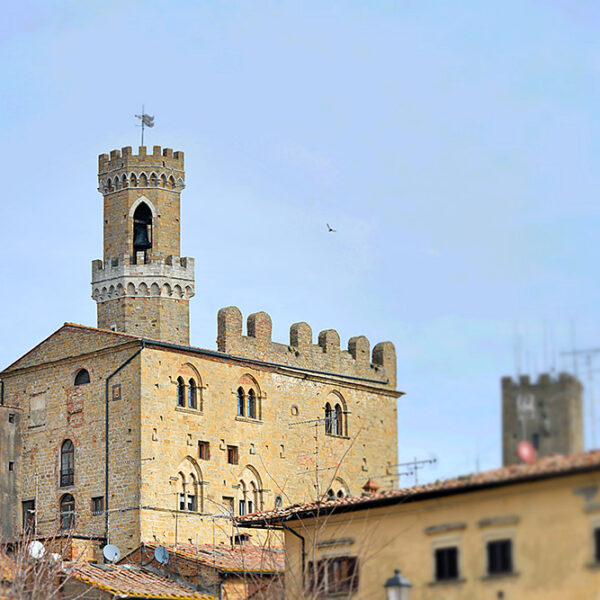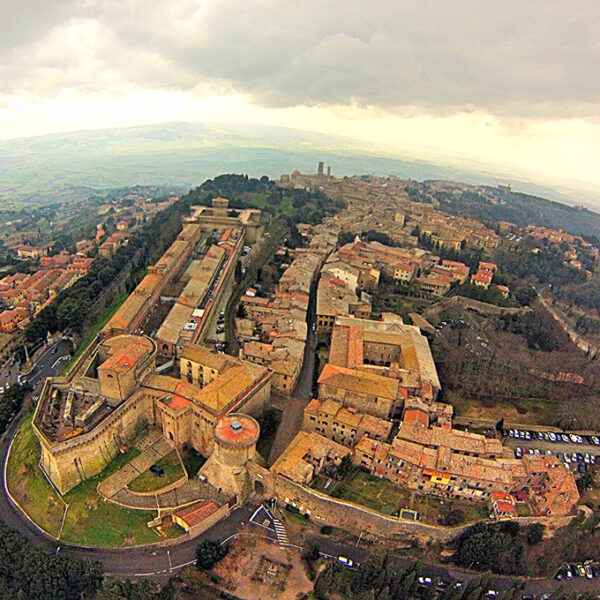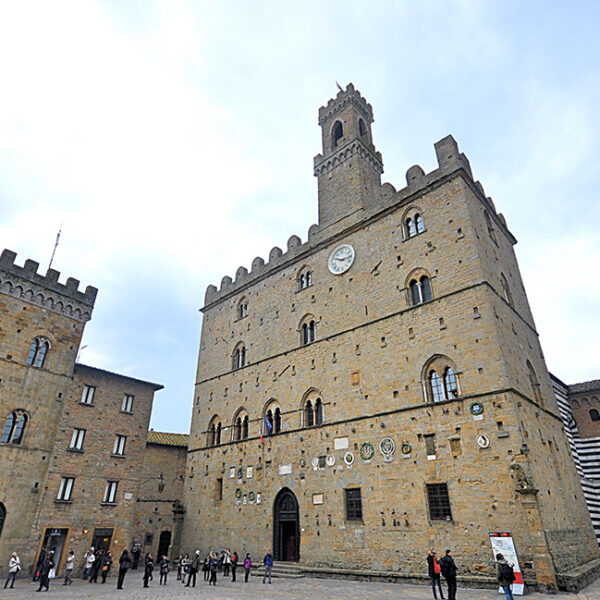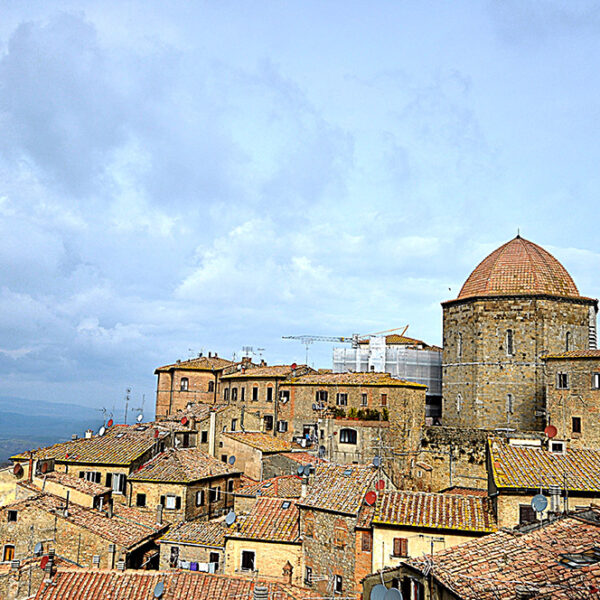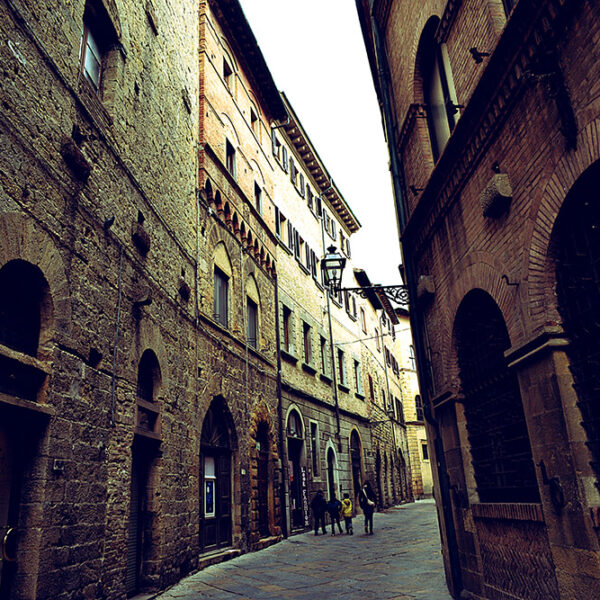The Roman presence, on the other hand, is documented by the important remains of the Roman Theater, dating from the Augustan period, thermal buildings, and a large water cistern.
The medieval aspect of the city is not only evident in the urban layout, but emerges above all in the palaces, tower-houses and churches: the 13th-century Palazzo dei Priori, the Palazzo Pretorio, with its crenellated tower known as the Porcellino, the two groups of towers known as the Buonparenti and Bonaguidi, the 12th-century Cathedral, which preserves in its interior works from the medieval and Renaissance periods, and the Baptistery, an ancient 13th-century building with rows of Volterra stone.
In addition to the monuments and numerous testimonies of art and history, Volterra offers a view of the gentle hill passage that surrounds it, abruptly interrupted to the west by the wild and impressive spectacle of the Balze.


